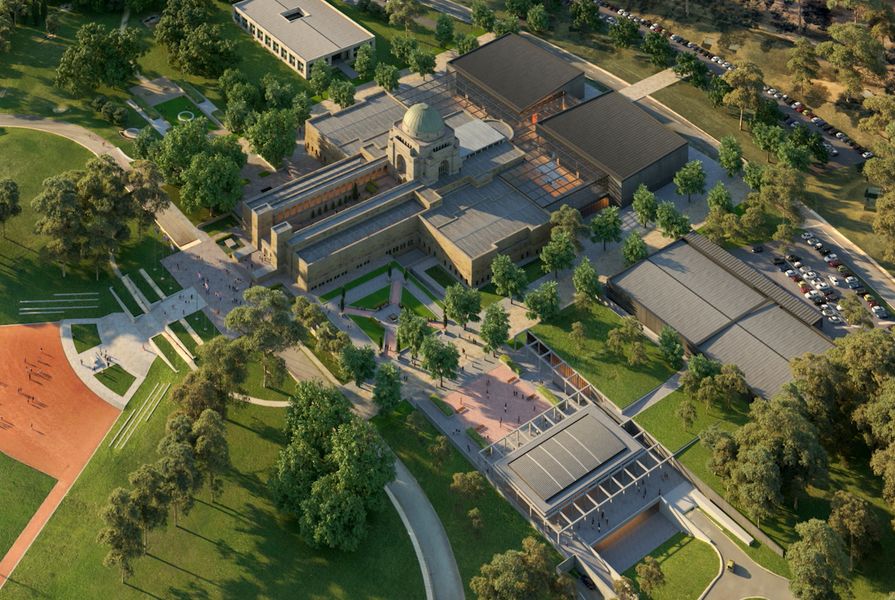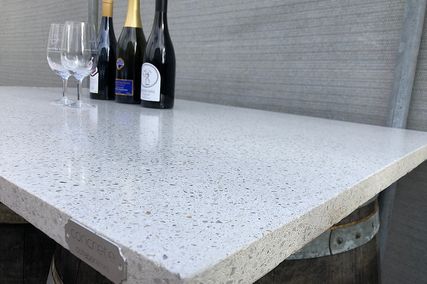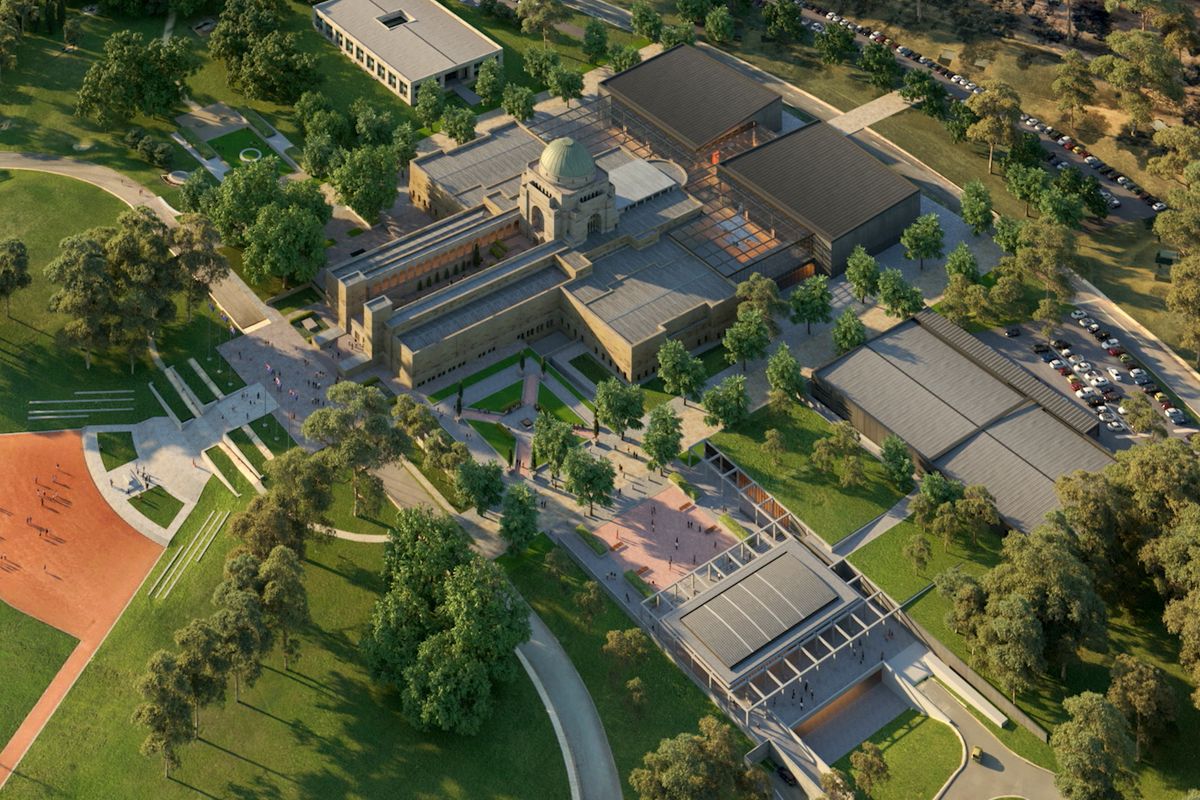The Australian government has backed the Australian War Memorial’s plans for a major expansion of its gallery and exhibition space in Canberra, with Prime Minister Scott Morrison announcing that the government would provide $498 million over nine years “to see these plans fulfilled.”
In January 2018, the Australian War Memorial commissioned a new “Gallery Masterplan” which would inform a detailed business case for the redevelopment of the memorial. A spokesperson for the Australian War Memorial told ArchitectureAU that the design used for the business case was undertaken by GHD Woodhead, but an architect has not yet been appointed for the project.
The memorial’s detailed proposal for the redevelopment includes three key components as well as the refurbishment of the original memorial building designed by Emil Sodersten and John Crust, completed in 1941.
The existing Anzac Hall, designed by Denton Corker Marshall and completed in 2001, would be demolished and replaced with a new and more extensive, multi-level Anzac Hall which will have an atrium and galleries.
A masterplan for the proposed redevelopment of the Australian Memorial prepared by GHD Woodhead.
Image: Courtesy Australian War Memorial
A new southern entrance would be created under the existing forecourt to the original memorial.
The existing C.E.W. Bean Building, also designed by Denton Corker Marshall, would also be extended.
The redevelopment plans would increase visitor areas by 83 percent, with 10,000 square metres of expanded exhibition and public program spaces.
Director of the Australian War Memorial, Brendan Nelson, said, “The Memorial plays a vital role to in our nation and is a true cultural icon for all Australians. This proposed redevelopment provides an opportunity to guide the future of commemoration and storytelling; right here in the heart of the land they loved.”
A masterplan for the proposed redevelopment of the Australian Memorial prepared by GHD Woodhead.
Image: Courtesy Australian War Memorial
However, the redevelopment plan has drawn the ire of some architects.
Denton Corker Marshall undertook a masterplan for the war memorial precinct in 1984, from which three buildings have been completed – Anzac Hall, which received the 2005 Sir Zelman Cowan Award for Public Architecture as well as the 2005 Canberra Medallion; the C.E.W. Bean Building and the Administration Building.
In a statement made to ArchitectureAU, John Denton, founding director of Denton Corker Marshall, said he was “massively disappointed” to learn of the demolition plans for Anzac Hall.
He also said, “The masterplanning we did for the memorial over the years makes it clear that there is not enough room for the massive expansion that the AWM wants to shoe-horn into the site – especially given the National Capital Authority’s regulations that required nothing to be visible behind the Memorial when viewed from Anzac Parade or the Parliamentary Triangle.
“I think the AWM, in its desire to ‘get the money,’ has failed to consider real options. After all, this is first and foremost a solemn memorial, and only after that a war museum.”
He said the war memorial and a war museum should be separate from each other, located on separate sites, like that of London’s Cenotaph and Imperial War Museum.
“Canberra has lots of space, so if you have the money allocated, why not build a War Museum on, say, the northeast corner of Anzac Parade and Constitution Avenue, at the end of the line of small memorials that line the Parade,” he said. “It would be close to, and engaged with, the Memorial. You could also spend a small portion of the funds building the competition winning WWI and WWII Memorial on the lake edge, which has been waiting for funding for years.”
Denton said he would like to see the building heritage listed “to protect it for all time.”
The Australian Institute of Architects similarly described the demolition plan as “deeply distressing” and said it was “shocked at the lack of consultation with the community, the Institute and the architectural moral right holders of the existing structure.”
National president Clare Cousins said, “It is incomprehensible that in planning what would otherwise be such a welcome extension at the War Memorial, so little regard has been shown for the cultural significance of Anzac Hall, which is a national landmark and much-loved exhibition space.
“Anzac Hall was designed with […] care and sensitivity to the highest standards of design excellence, an effort recognized when it was selected above any other piece of public architecture to receive the Sir Zelman Cowen Award.”
She said the demolition of the building would be “a colossal waste” of taxpayer dollars and a “mark of disrespect.”
“The Australian War Memorial is one of our nation’s most significant monuments and a site of immense pride and emotion,” Cousins said.
“The Institute is resolved to fight these plans. We must put an end to the pattern emerging which treats major public works as somehow disposable.”




















